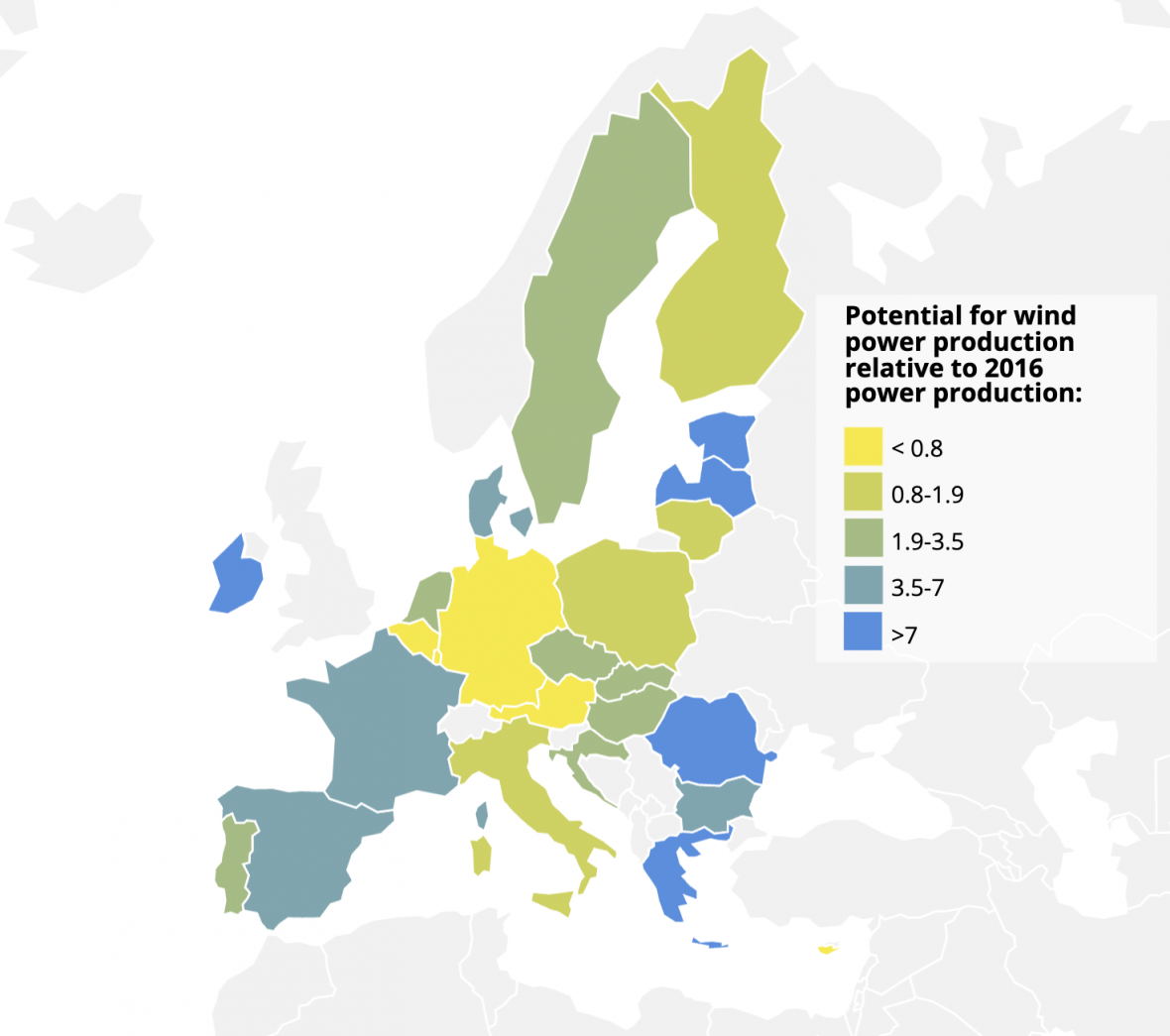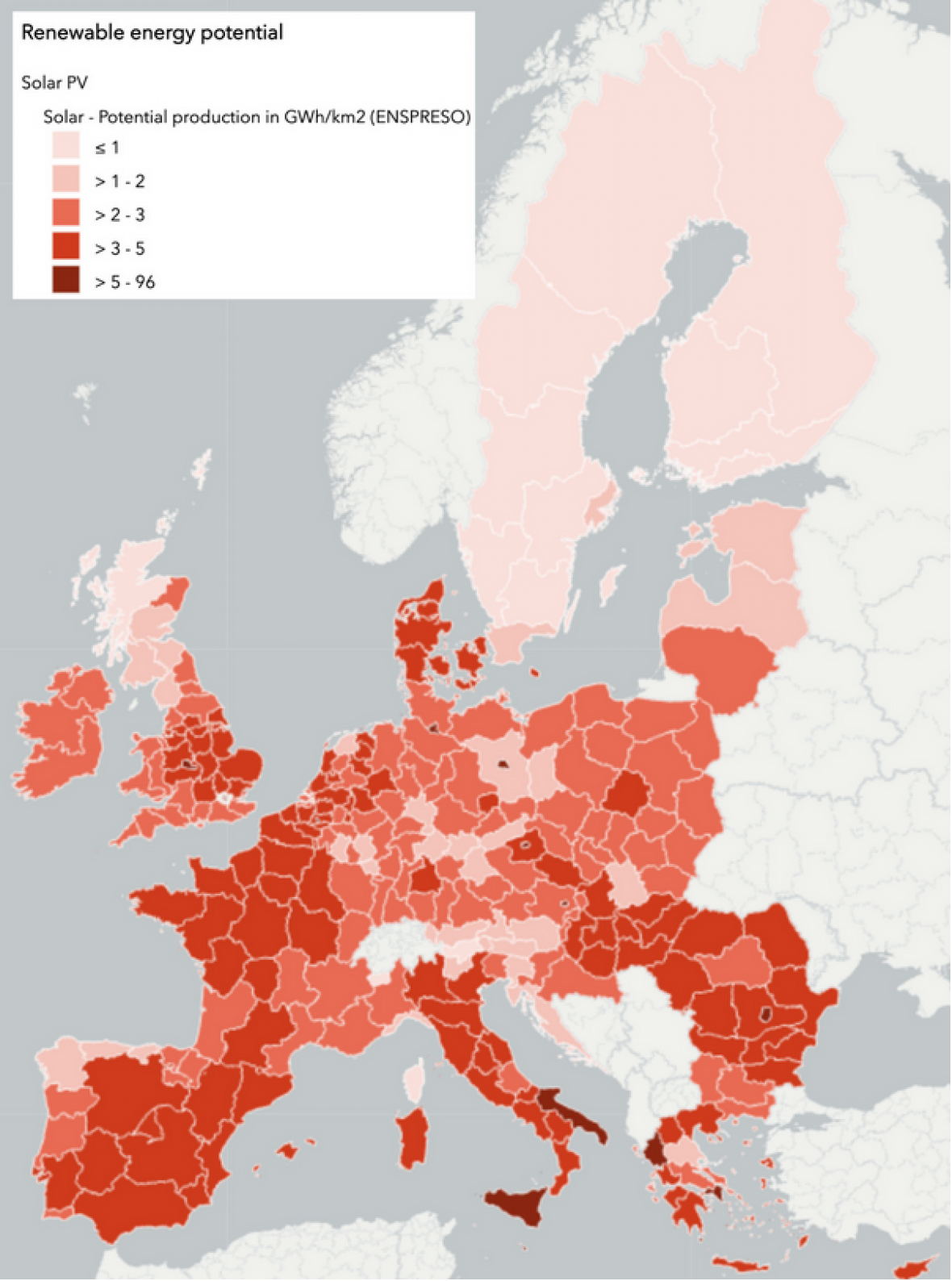Discussing future hydrogen geographies in Europe: a conversation that is overdue
07.11.2022
The transition to renewable energy in Europe has evolved dynamically since the turn of the century. The share of renewable energy in the European Union more than doubled between 2004 and 2022. Nevertheless, renewable energy represents only 22 percent of overall energy consumption and 37 percent of electricity generation in the EU. In other words, Europe still has a long way to go, even when it comes to the relatively easy task of converting its electricity production to renewables.
In the meantime, Europe’s goal to achieve climate neutrality by 2050, as enshrined in the European Climate Law, has shifted attention to more challenging tasks: the elimination of greenhouse gas emissions from so-called hard-to-abate sectors, such as energy-intensive industries and long-distance transport. These sectors have in common that the direct use of renewable electricity does not offer a comparatively easy pathway for the elimination of greenhouse gases in these sectors. Instead, climate-neutral hydrogen - as feedstock for the production of basic chemicals and synthetic fuels or as a reduction agent in low-carbon steel making, to name a few applications - offers a promising pathway for many of these hard-to-abate sectors.
This has raised the important question of where this hydrogen will come from in the future. The EU Hydrogen Strategy and the REPower plan envision the rapid ramp-up of renewable electricity-based hydrogen, the only climate neutral avenue for producing hydrogen. It has targeted the development of 10 million tons of renewable hydrogen in the EU and an equivalent amount of hydrogen to be imported from partner countries by 2030. These ambitious targets translate into additional renewable electricity generation of approximately 500 TWh, both in the EU and in partner countries. This is also roughly the amount needed to meet the EU’s pre-existing 2030 targets for renewable energy. Together, this means the EU would have to approximately double its renewable energy generation from 1000 TWh to around 2000 TWh per year by 2030. (A further increase of the EU’s renewable energy target has recently been proposed by the EU parliament.)
Meeting these targets will have major implications for the future energy geography in Europe. While analysts have pointed to the economic and technical challenges of these goals, the spatial dimension of these developments is not explicitly addressed in the EU strategy and rarely features in policy discussions. The main responsibility for reaching these goals sits with the member states. However, the most ambitious strategies do not necessarily correspond to the geographies with the greatest potential to produce a surplus of renewable energy.
For instance, Germany has one of the most ambitious hydrogen strategies, targeting 5 GW of electrolyzer capacity by 2030. However, among EU member states it has some of the lowest renewable energy potential relative to its existing electricity consumption (see figure 1 below). Spain is among the member states with one of the largest potential renewable energy surplus, and it has an estimated onshore wind power potential that is more than six times that of Germany.
However, it is only targeting 4 GW of electrolyzer capacity by 2030. Greece, with onshore wind power potential that surpasses Germany’s by more than 70 percent, is targeting electrolyzer capacity of 750 MW by 2030. Similarly, Romania has about 50 percent more potential for wind power production than Germany but has yet to launch a national hydrogen strategy (for wind power potentials see JRC (2018) report on Wind energy potentials for EU and neighboring countries, especially page 38). Solar potential relative to its electricity consumption also vastly surpasses relative potential in Germany (see figure 2 below).
Figure 1: Potential for wind power production in EU member states relative to 2016 power production (Source: IASS Potsdam, based on JRC, 2018)

Figure 2: Solar energy potential in the European Union, by region (Source: JRC Energy and Industry Geography Lab, ENSPRESO dataset)

This is partly offset by the significant offshore potential in the North Sea, which will play an important role not only in meeting German hydrogen targets but also those of Denmark, Belgium and the Netherlands. These four countries have jointly declared their intention to build 20 GW of electrolyzer capacity by 2030, underpinned by 65 GW of offshore wind capacity. Beyond this targeted effort to exploit the potential of the North Sea, hydrogen ambitions in Europe do not correspond primarily to future renewable energy potential but to governments’ financial capacity to invest in climate-friendly innovation and industrial development. Apart from the renewable-rich Nordics, Germany and Italy have the most ambitious targets for renewable-based electrolyzer capacity, despite comparatively low levels of renewable energy potential relative to their power demand. France has also formulated ambitious hydrogen targets. However, it represents a special case, given the high share of nuclear energy in its energy mix. It targets 6,5 GW of electricity-based hydrogen, the highest among member states, powered by either renewable or nuclear energy.
The German strategy also places a strong emphasis on developing supply chains for the import of hydrogen to meet its future hydrogen demand. While these efforts address Germany’s expected gap in meeting its hydrogen demand, unlocking intra-European hydrogen trade is not the main priority. It is also not explicitly tackled in the EU hydrogen strategy. Although the EU strategy acknowledges the need for imports from non-EU countries, the strategy does not propose any approach for aligning renewable potential among the member states with their hydrogen ambitions, leaving this to the member states. Neither Germany nor the EU engages actively with the question of future geographies of hydrogen demand. Rather, the implicit assumption is that existing demand centers, mainly located in Northern European countries, will largely remain in place, with hydrogen flows developing to satisfy this demand.
To date, only Spain has formulated a vision that diverges from this conception, targeting hydrogen development both for export to Northern European demand centers and for the development of new, climate-neutral industrial supply chains in Spain. It is hoping to leverage its renewable energy potential to attract investment. Such a development has clear analogies in history. The availability of energy resources was instrumental in shaping Europe’s existing industrial geographies, located near centers of coal extraction or along waterways enabling their transportation. While current infrastructure and know-how located in existing industrial regions will no doubt also play an important role, renewable resources are likely to emerge as an important additional factor.
To date European policy is largely blind to Europe’s renewable energy geography, presumably relegating this to the market forces driving investment decisions. However, in contrast to past energy transitions, current developments are not merely accompanied by governments. Rather policy is the central driver of these changes. Against this background, an engagement with these geographic dimensions and how they might influence the future of energy and industry in Europe could offer important new insights for European policymakers. Spelling out differing scenarios for Europe’s future energy geography and their implications for aspects such as energy security, industrial competitiveness as well as the environmental and social sustainability of hydrogen development could yield important insights for better positioning Europe and its Green Deal internationally. As Europe’s current energy crisis has revealed energy geographies - and how they are shaped by infrastructure decisions - matter.
This blog post was first published on 28 October, 2022, on the FUTURES4EUROPE website.
